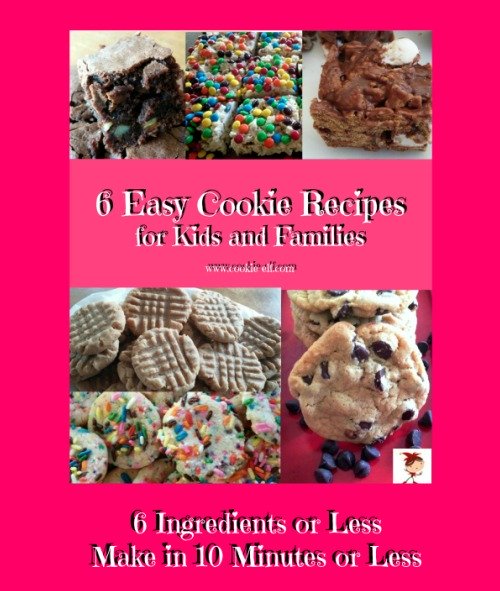Sugar in Cookies: What It Does and What Kinds to Use
Sugar in cookies sweetens the dough. But that’s not all it does!
Bet you didn’t know all the other ways sugar makes a difference in your cookies.
What Sugar Does In Cookies
Sugar tenderizes. As it dissolves with other ingredients, sugar absorbs moisture which slows down the development of gluten and starch. Sugar helps the dough be tender and crumbly rather than tough.
Sugar caramelizes. When is heated above its melting point sugar turns golden or amber. The coloring deepens the cookie surfaces … and makes your kitchen smell delicious.
Sugar expands. Since sugar melts when it is heated (that is, baked), sugar in the dough helps the cookies to spread on the baking sheet or in the baking pan.
Sugar stabilizes. In recipes with little or no fat (like meringues), sugar adds bulk, helping to slow coagulation.
Kinds of Sugar in Cookies
Four types of sugar are most commonly used in baking homemade cookies.
Granulated Sugar
Granulated sugar, also called refined sugar, table sugar, or
white sugar, is the type of sugar that fills your sugar bowl. It is what most people think of first when they think of sugar in cookies.
It is extracted from sugar beets or sugar cane. Sugar beets are processed to remove syrup, and after concentration the sugars are isolated and crystallized.
Sugarcane is processed a bit differently. Stalks are cut, crushed and combined with water and lime. The resulting syrup is cooked to isolate the crystals.
In both cases, sugar crystals are refined through a purification
process, bleached white with sulfur dioxide, and dried so that the crystals do
not clump together.
You can identify different types of granulated sugar by crystal size. The most common white sugar for cookie baking is regular sugar, which is classified by the food industry as “fine” or “extra fine.”
Superfine sugar (or ultrafine sugar), the finest of all granulated white sugar textures, is called for occasionally in recipes because it dissolves easily. In cookie baking, it is used for delicately-textured cookies and meringues. Superfine sugar is also called caster or castor sugar, particularly in the United Kingdom, so named for the shaker in which it is packaged.
Brown Sugar
Brown sugar is white sugar with added molasses, giving it a richer, deeper flavor. The molasses also softens and moistens the sugar.
Dark brown sugar has more molasses than light brown sugar, but the two can be used interchangeably – depending on your taste. Dark brown sugar is more intense. Light brown sugar has a more delicate flavor. When a recipe calls specifically for dark brown sugar or light brown sugar, you can substitute either one for the other as they both function in the same way in a recipe. The difference between the two in cookies is how each highlights flavors. Dark brown sugar adds depth, white light brown sugar is more subtle.
Powdered Sugar
Powdered sugar, also called confectioners sugar, is a granulated sugar crushed into a fine powder, sifted, and combined with cornstarch. The cornstarch prevents clumping and makes up about 3 percent of product.
A higher number of Xs on powdered sugar packages indicate finer grind; for instance 4 X (XXXX) powdered sugar is more finely ground than 3 X powdered sugar (XXX). All levels of powdered sugar grind can be used interchangeably with each other in cookie recipes. But take note: powdered sugar is not to be substituted for granulated sugar or brown sugar, since the added cornstarch in powdered sugar changes cookie chemistry and texture.
Raw Sugar
Sometimes raw sugar is confused with brown sugar, since both are colored tan, golden, or light brown. It is produced from the residue left over after the first stage of cane sugar processing. Cookie recipes sometimes call for raw sugar particularly as a sprinkled topping. You can use raw sugar interchangeably with white sugar and brown sugar in cookie recipes.
You may encounter three different kinds of raw sugar in your
baking adventures: Demerara sugar (coarse textured), Turbinado sugar (fine
textured), and Barbados sugar,
(steam cleaned sugar).
More about Cookie Ingredients
Baking Homemade Cookies: the basics ...
Baking cookies tips: The Elf's hints for best Christmas cookies ...
Baking terms to know when baking cookies ...
4 Kinds of Cherries in Cookie Recipes ...
Candied Ginger: make your own for less ...
Caramel in cookies: sauce or candy ...
Stevia in cookies: a no-calorie sugar substitute ...
4 types of food coloring to use when making cookies ...
Nonpareils: the cookie decoration "with no equal" ...
Using oatmeal in cookie dough ...
More about cookie ingredients on our Pinterest board ...
Return from Sugar in Cookies: What It Does and What Kinds to Use to
The Cookie Elf home
Find A Cookie Recipe or Cookie Baking Tip
The Cookie Elf
FREE! 6 Easy Cookies Recipes for Kids and Families
Get your free copy here or when you fill in the form below.




New! Comments
Have your say about what you just read! Leave me a comment in the box below.